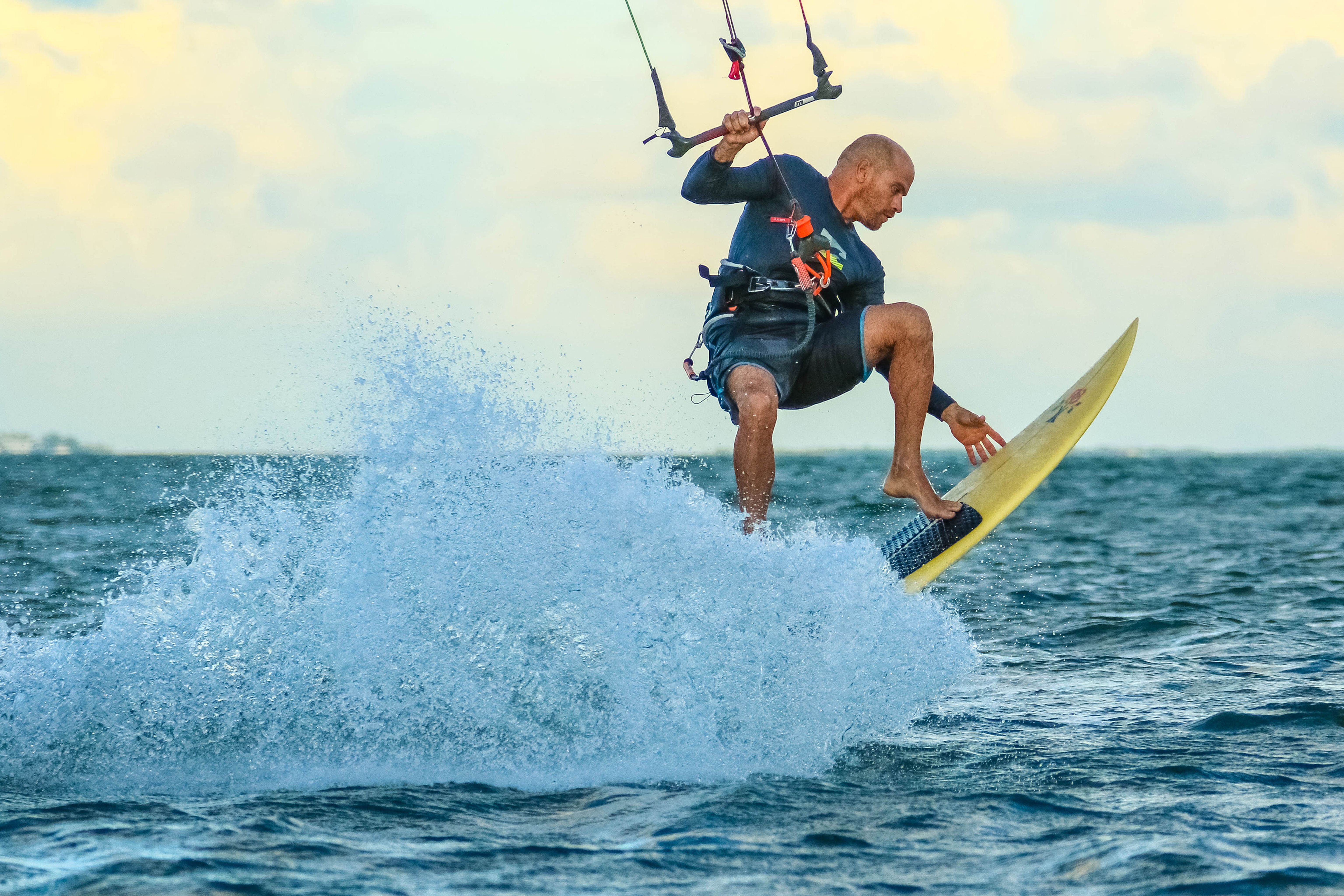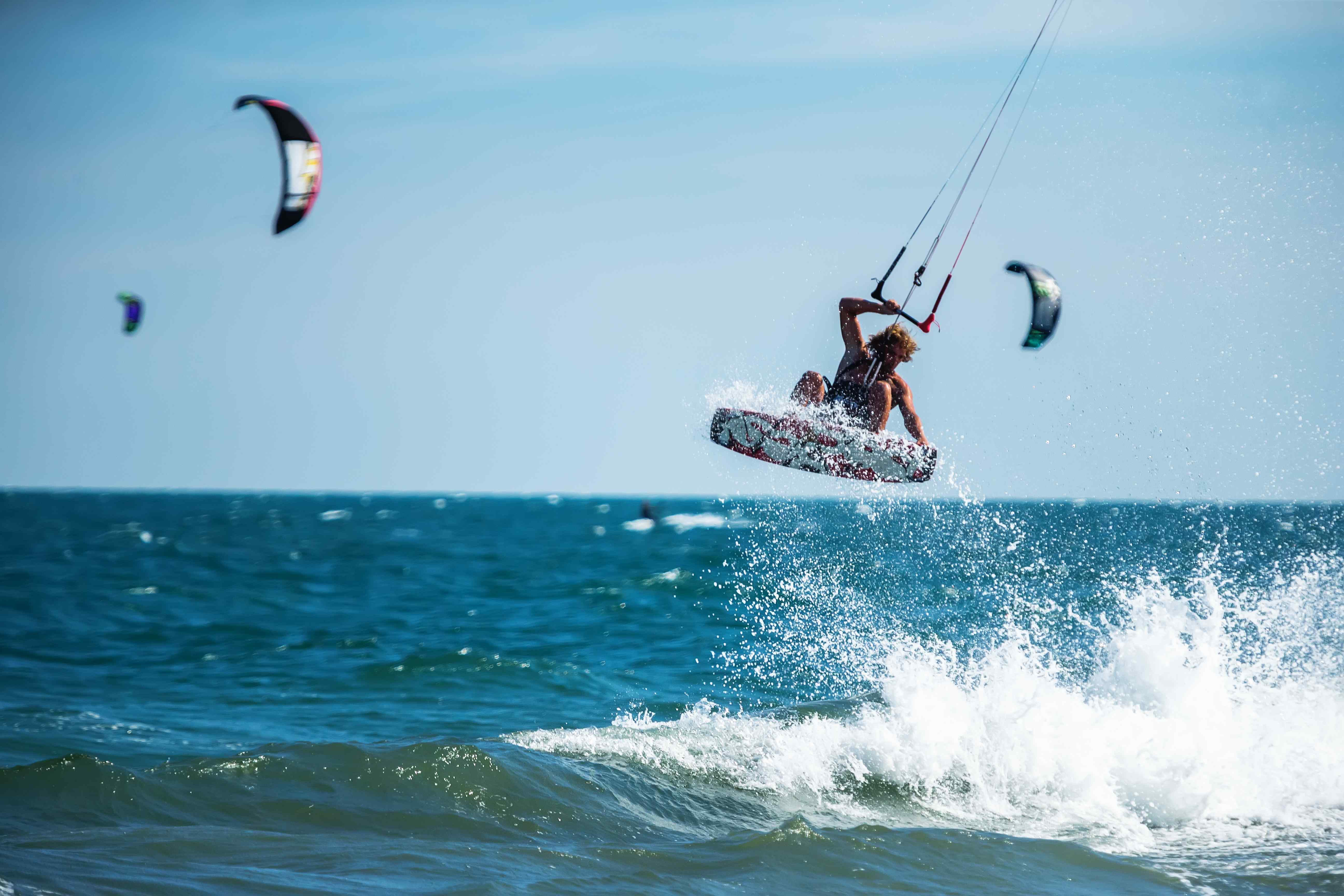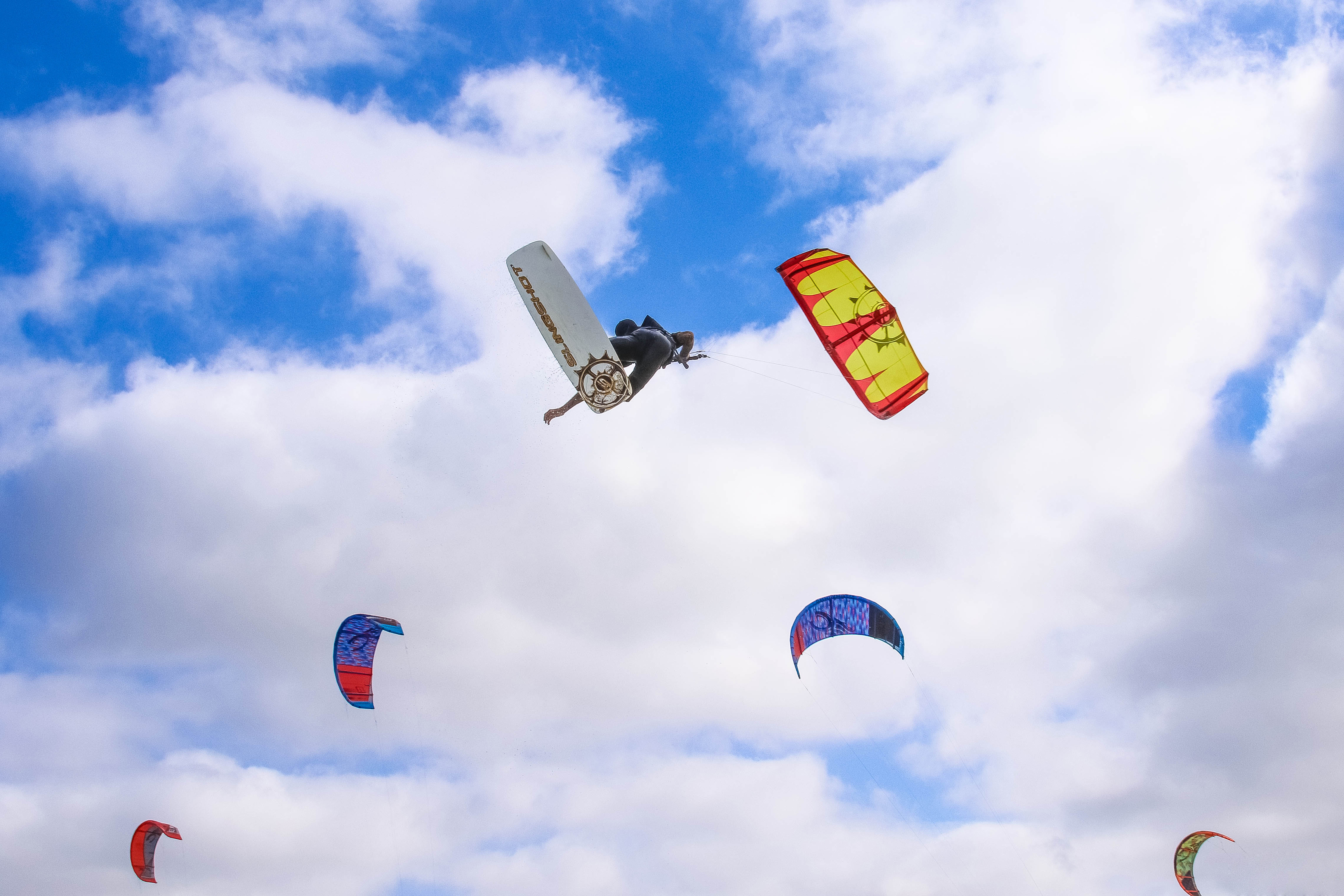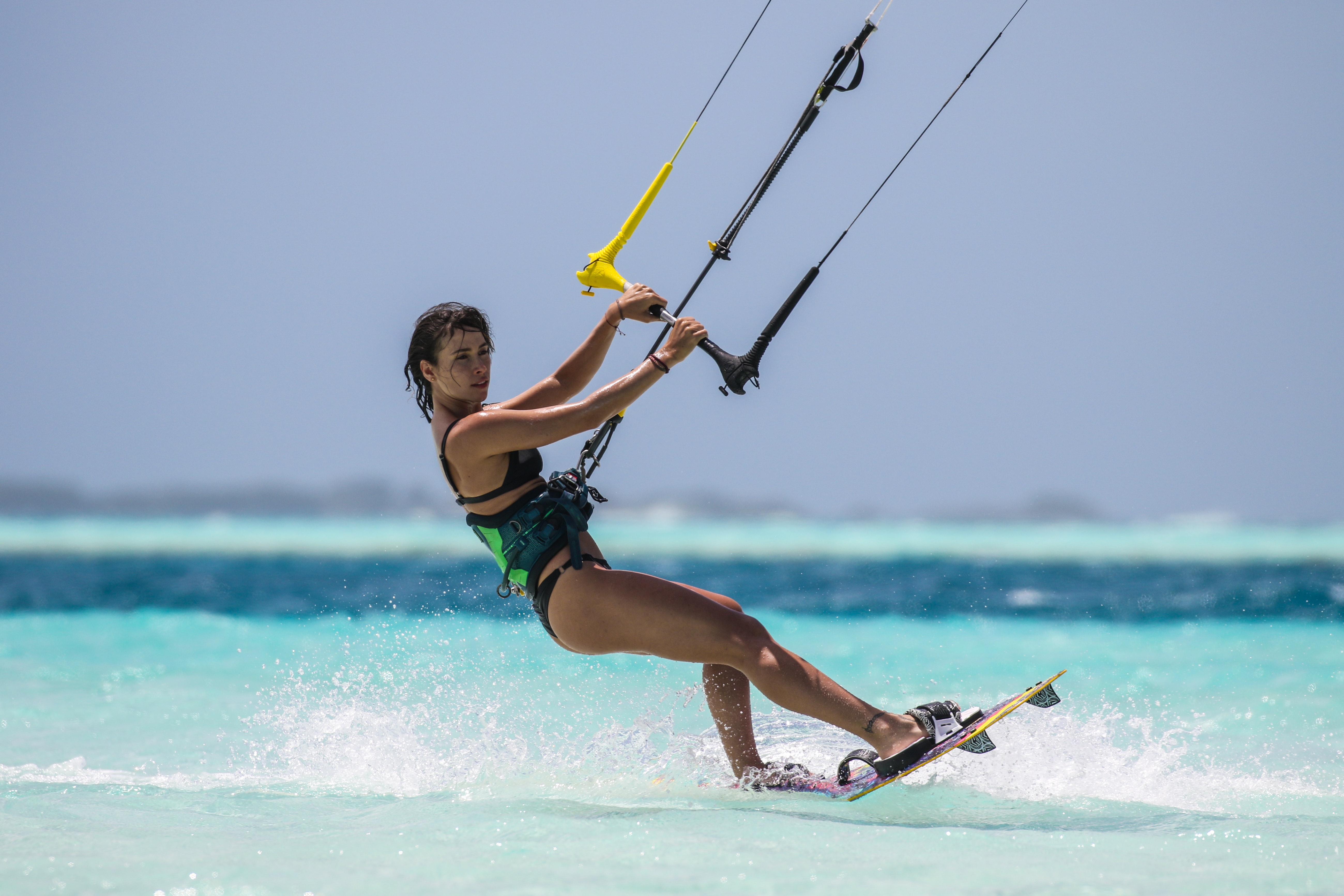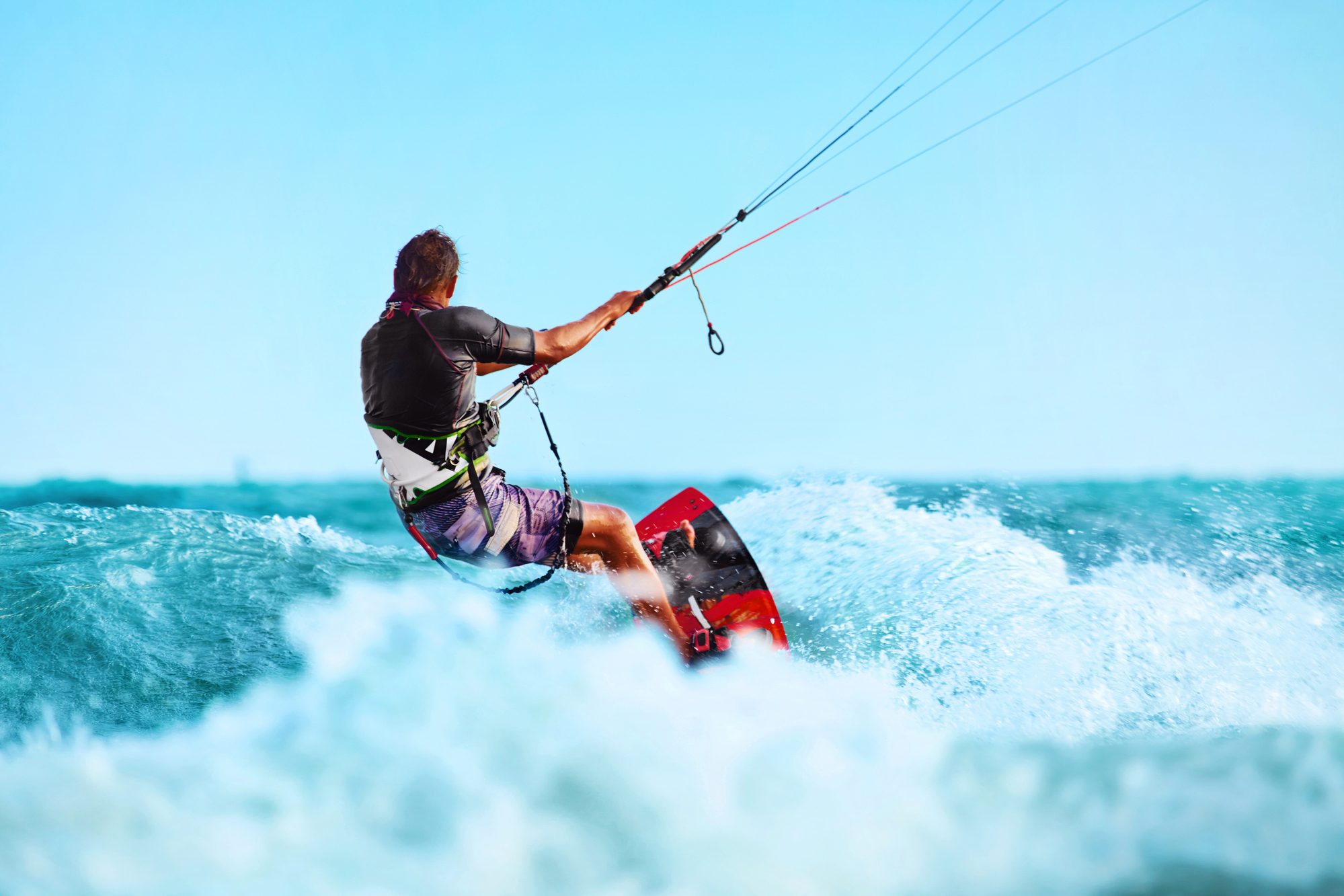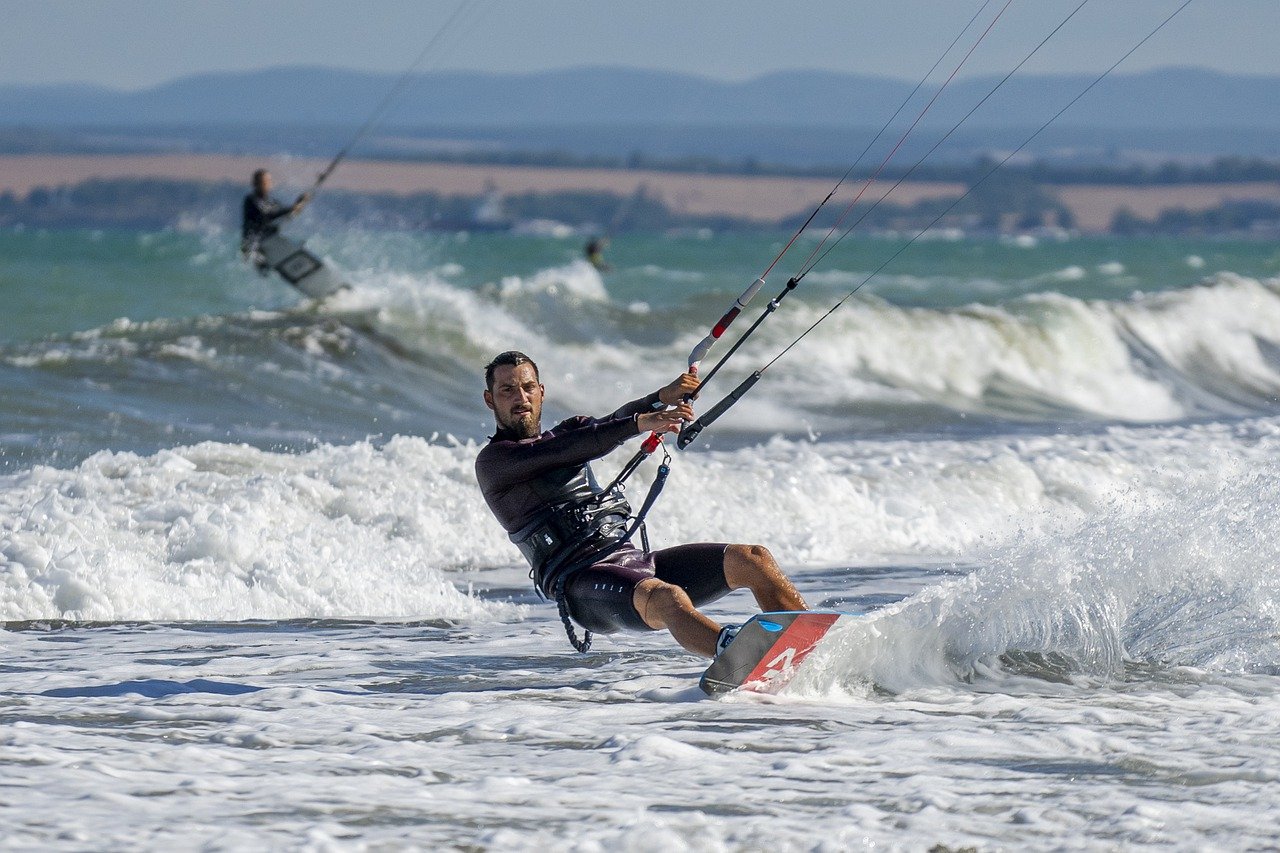Do you want to get into the exciting world of water sports? Check out kiteboarding!
One of the most exciting and thrilling water sports out there, kiteboarding is a must-try for any adventure seeker.
But what exactly is kiteboarding? And how did it start?
Let's take a look at the fascinating history of kiteboarding and find out what this awesome water sport is all about.
What is Kiteboarding?
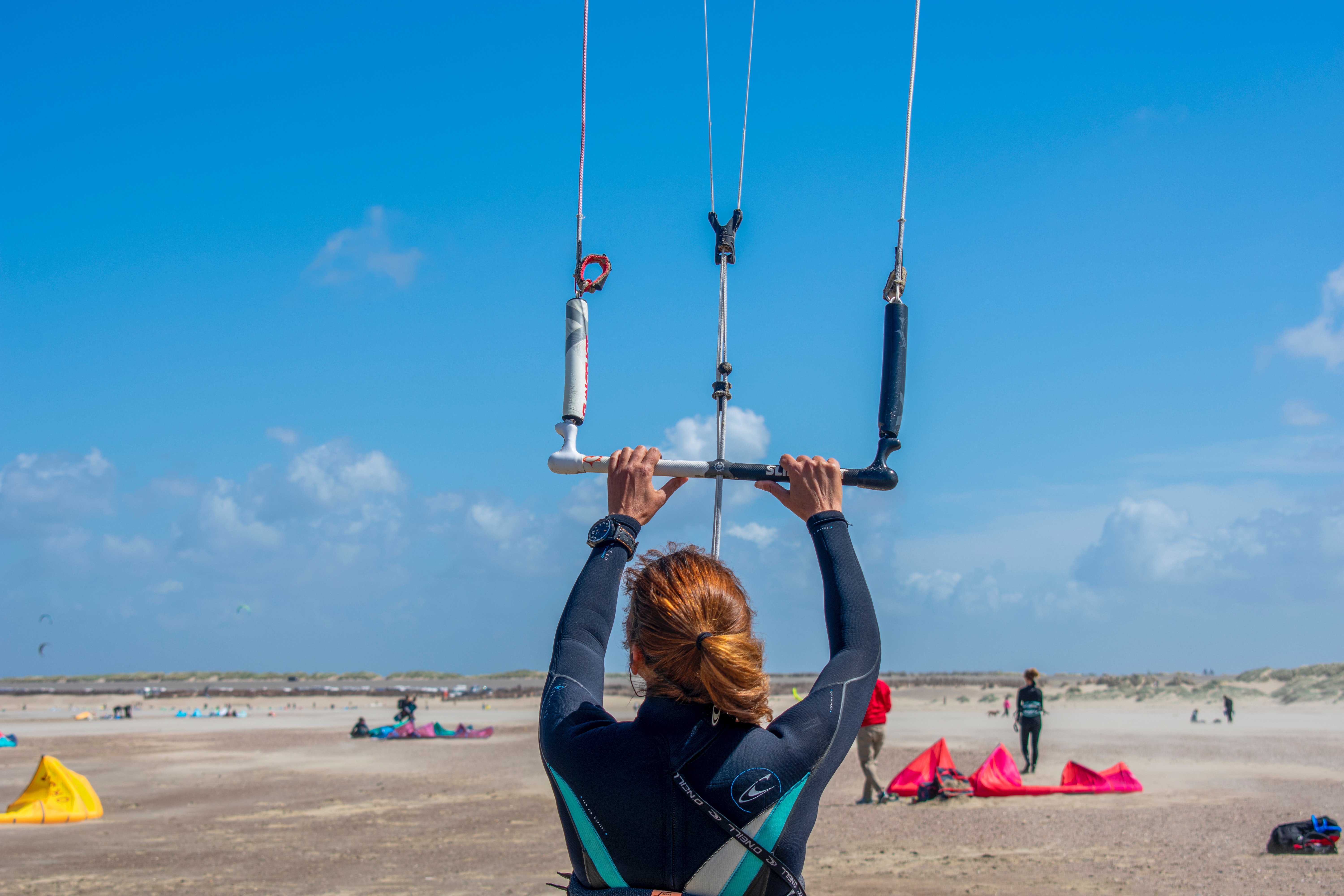
Kiteboarding is a water-based adventure sport in which a large steerable kite is used to propel yourself on a board above the water.
The bar and lines that connect to your harness are used to control the kites, which are draped around your midsection.
It's a bit like wakeboarding or snowboarding, but with the power of a kite!
Kiteboarders use the wind to glide across the water, performing tricks and stunts along the way.
The kite can be flown in specific ways to generate lift and even leap high in the air.
When we say jump, we mean it. When the conditions are right, expert kiteboarders can leap 50 or 60 feet into the air and float for hundreds of meters. That's something you definitely don't see every day!
How Did Kiteboarding Start?
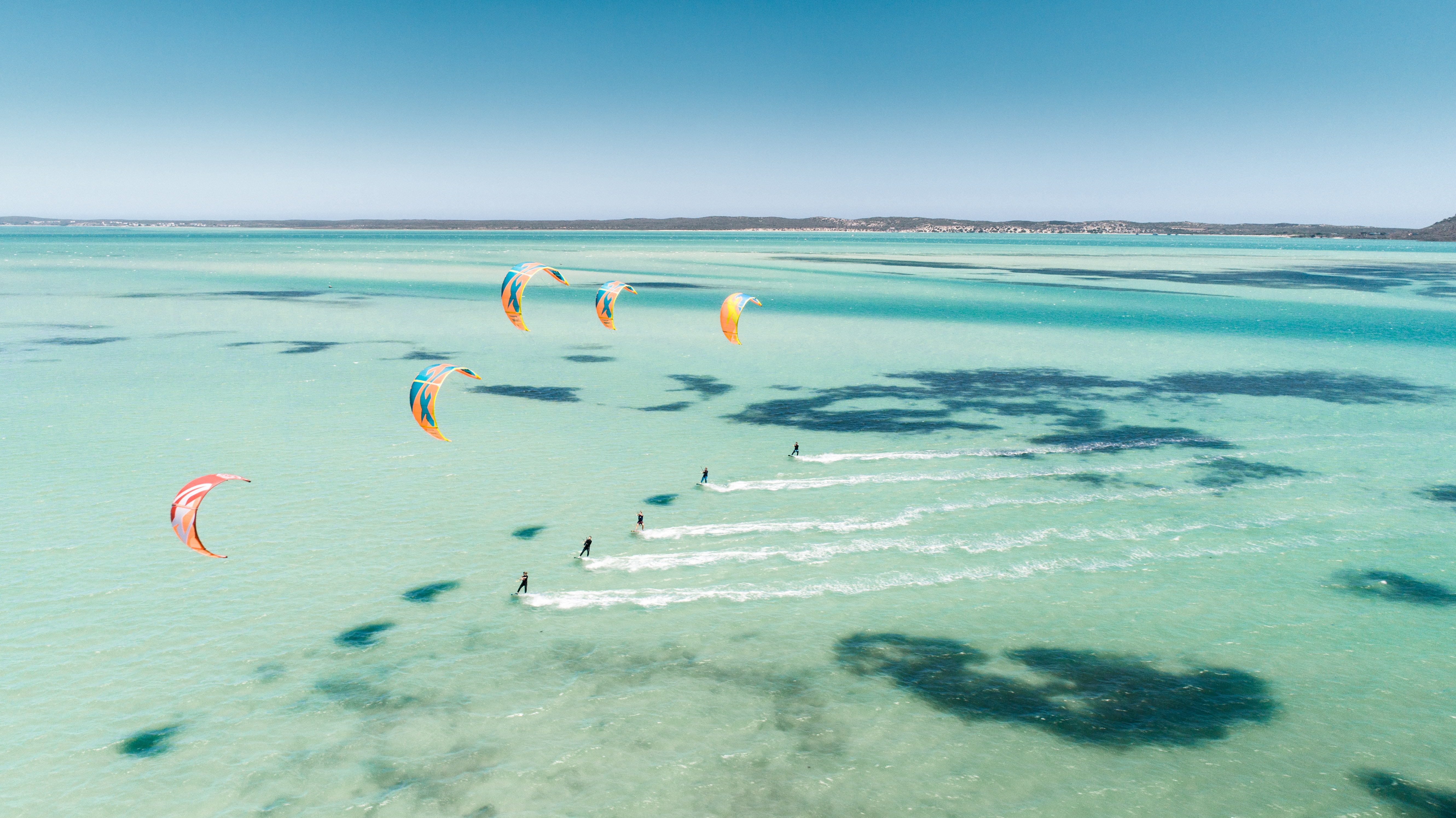
Kiteboarding is a relatively new water sport, having only gained popularity in the last few decades.
The sport was first conceived in the south of France during the late 1970s and early 1980s when Dominique and Bruno Legaignoux experimented with a twin-line kite in water skiing.
They took their design cues from the Jacob's Ladder catamaran, which features a Flexifoil kite stack and a Birdsail, a miniature hang-glider that replaced the windsurf sail.
After spending years of research, development, and testing, Oregon's Cory Roeseler and his father founded KiteSki in the early 1990s.
They developed a patent-protected kite sports bundle that caught the eye of some water sport enthusiasts in Maui.
Emmanuel Bertin, Joe Koehl, Laid Hamilton, Don Montague, Robby Naish, and other kiteboarders enhanced the sport's technical side and made it popular.
The first kiteboarding event was held in September 1998 in Maui and featured 22 athletes.
The sport really took off after that, and now there are competitions all over the world!
What is Freestyle Kiteboarding?
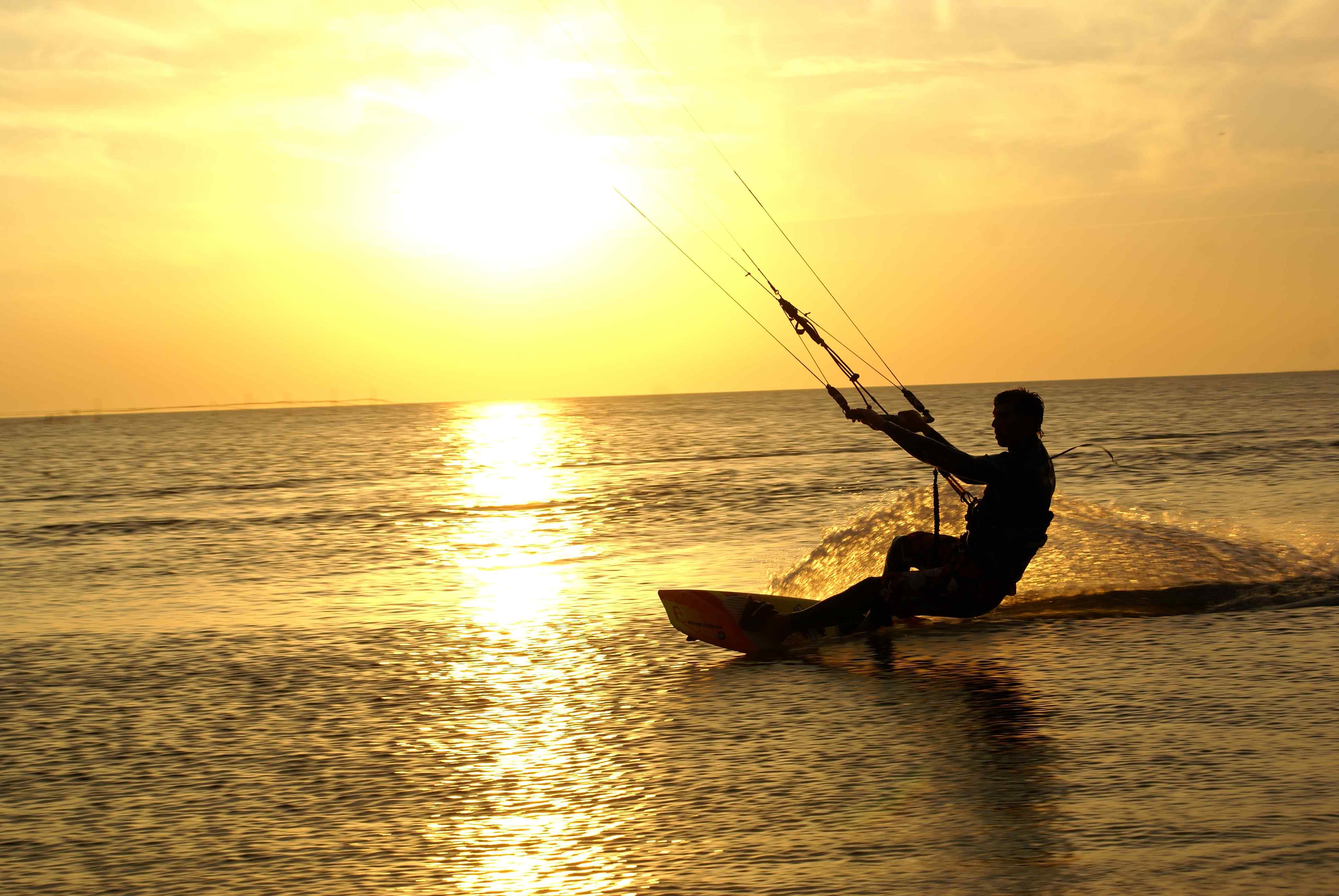
Since its inception in the '90s, kiteboarding has evolved tremendously.
You've probably seen kite surfers and noticed that not everyone uses the same equipment or takes the same approach.
Today, there are different disciplines of the sport that include freestyle riding.
Freestyle riding emphasizes kite-powered tricks. Kite loops and leaps are examples of "anything goes" style riding.
Freestyle riders utilize a kite and board to create big air, allowing them to perform various flips and tricks while airborne.
Kites used for freestyle generally have a "C-Shape" profile and squared-off wingtips. The kite is extremely quick and aggressive to maneuver, making it ideal for kite loops and unhooked tricks.
Freestyle kites are ideal for both beginners and experts. They're also great fun to fly!
The slack in the lines allows the user to perform tricks without having too much tension on the bar, which is perfect for freestylers.
This is the discipline that you'll see in most competitions.
What is Foil Kiteboarding?
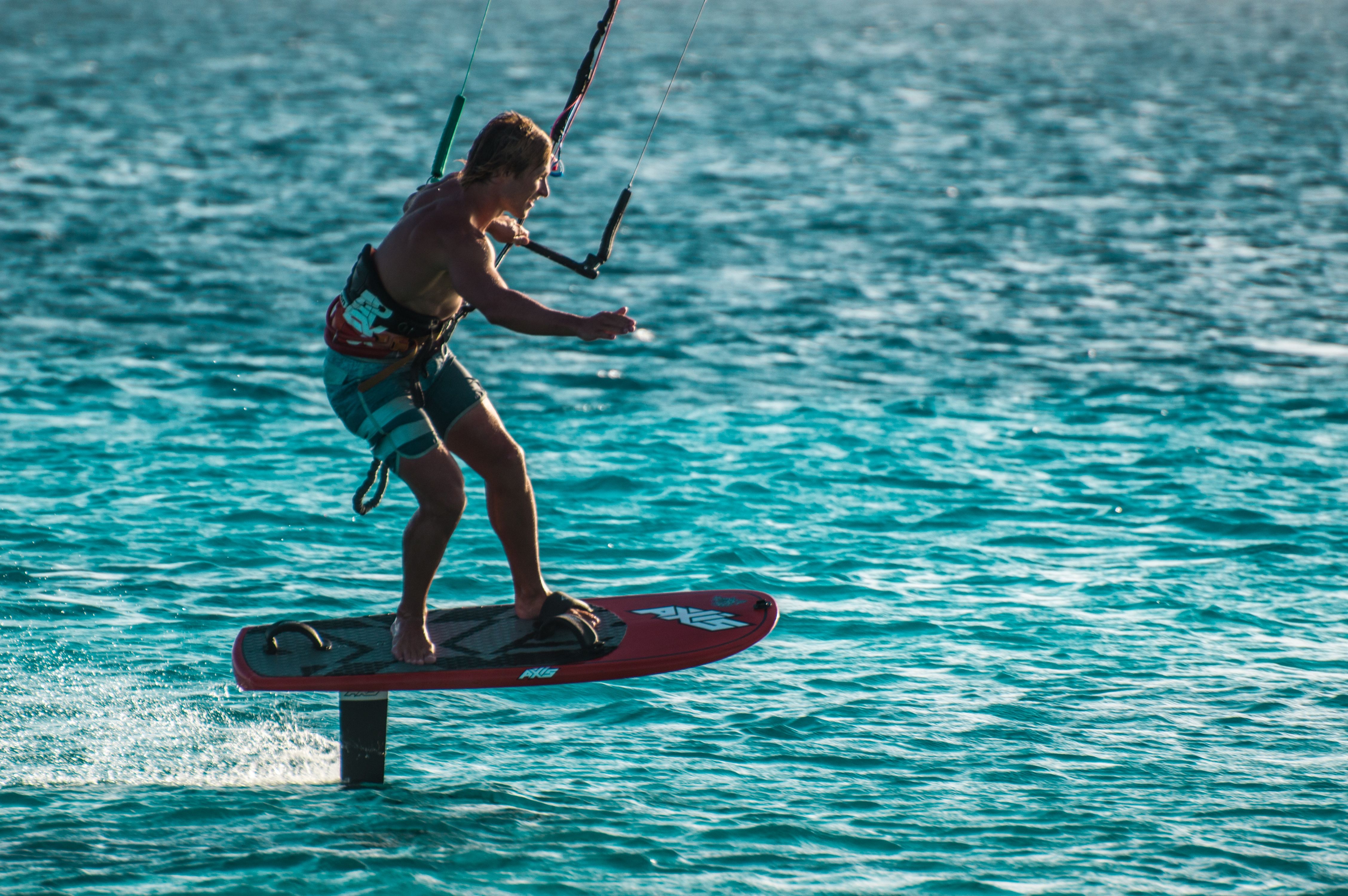
You might have also heard of foil kiteboarding or kite foiling. This is a relatively new style of kiteboarding that has become popular in recent years.
Kite foiling is similar to windsurfing but with the power of a kite!
A foil board is a hydrofoil board that uses an underwater wing to create lift, allowing the rider to glide across the water with very little drag. This makes for a very smooth and fast ride.
Foil kiteboarding is perfect for those who want to experience the sensation of flying above the water. It's also great for riders who want to go fast and explore new places.
You can practice foil kiteboarding in almost any waters as long as it is allowed. You want anywhere where the water is at LEAST 5 feet deep, and the wind speed is at least 10 miles per hour.
That leaves you with a lot of opportunities to foil. Light winds are best since they are less likely to be harmful. The ideal range for wind speed is 10 to 17 mph.
How to Get Started with Kiteboarding?
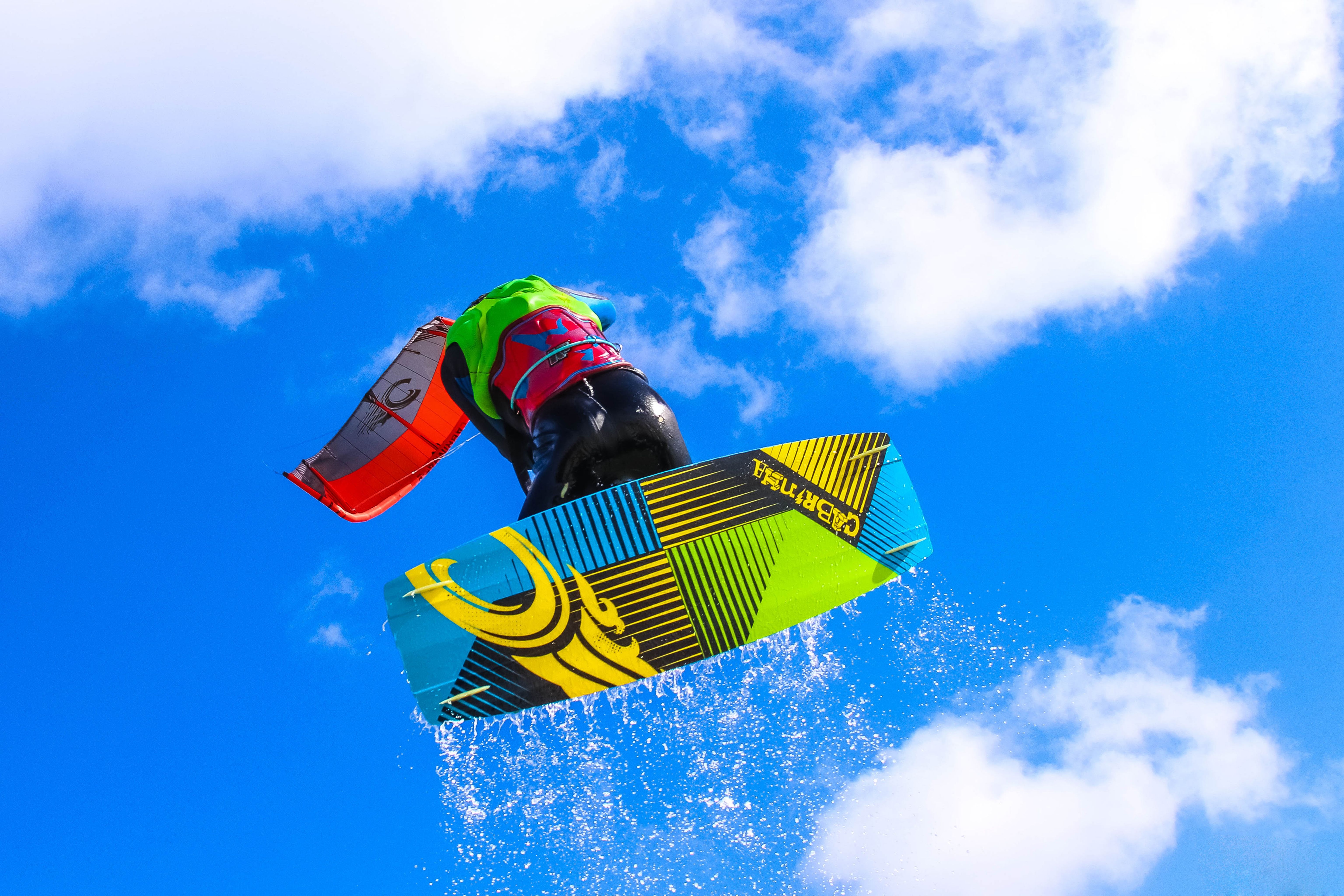
Kiteboarding can be a bit intimidating for beginners, but it's definitely a very rewarding sport.
If you're looking to get started, here are some tips to help you out:
1. Invest in a trainer kite
The first step in learning how to kiteboard is to learn how to fly a kite. Trainer kites are smaller and less powerful than the full-size setup you see people using out on the water, but they are perfect for learning the basics.
A trainer kite will help you learn how to control the kite, read wind conditions, and launch and land a kite. It's also a lot of fun!
Most training kites are between 2 and 4 meters long. Buy a trainer kite with a third line that allows you to relaunch the kite after crashing.
2. Step up your board skills
If you haven't stepped on any kind of board before, then you'll want to start with some basic skateboarding or snowboarding.
Board skills are essential for kiteboarding and will help you control the board while in the water.
It's also essential to have a good sense of balance.
Work on your basic stance, turning, and edging techniques. These will come in handy when you're kiteboarding.
3. Take up kiteboarding lessons
It's always a good idea to take some lessons from an instructor before starting kiteboarding.
This will help you learn the basics of the sport and how to stay safe while out on the water.
Most kiteboarding schools offer beginner classes to teach you everything you need to know about getting started in this exciting sport.
4. Practice and more practice
Like any other sport, practice makes perfect. The more you kiteboard, the better you'll become.
Head to your nearest beach or lake and start practicing. Be sure to have someone with you who can help out in case of an emergency.
Kiteboarding is a thrilling sport that can provide hours of enjoyment for both beginners and experts. With a little bit of practice, you'll be kiteboarding like a pro in no time!
Do You Have to be Fit to Kiteboard?
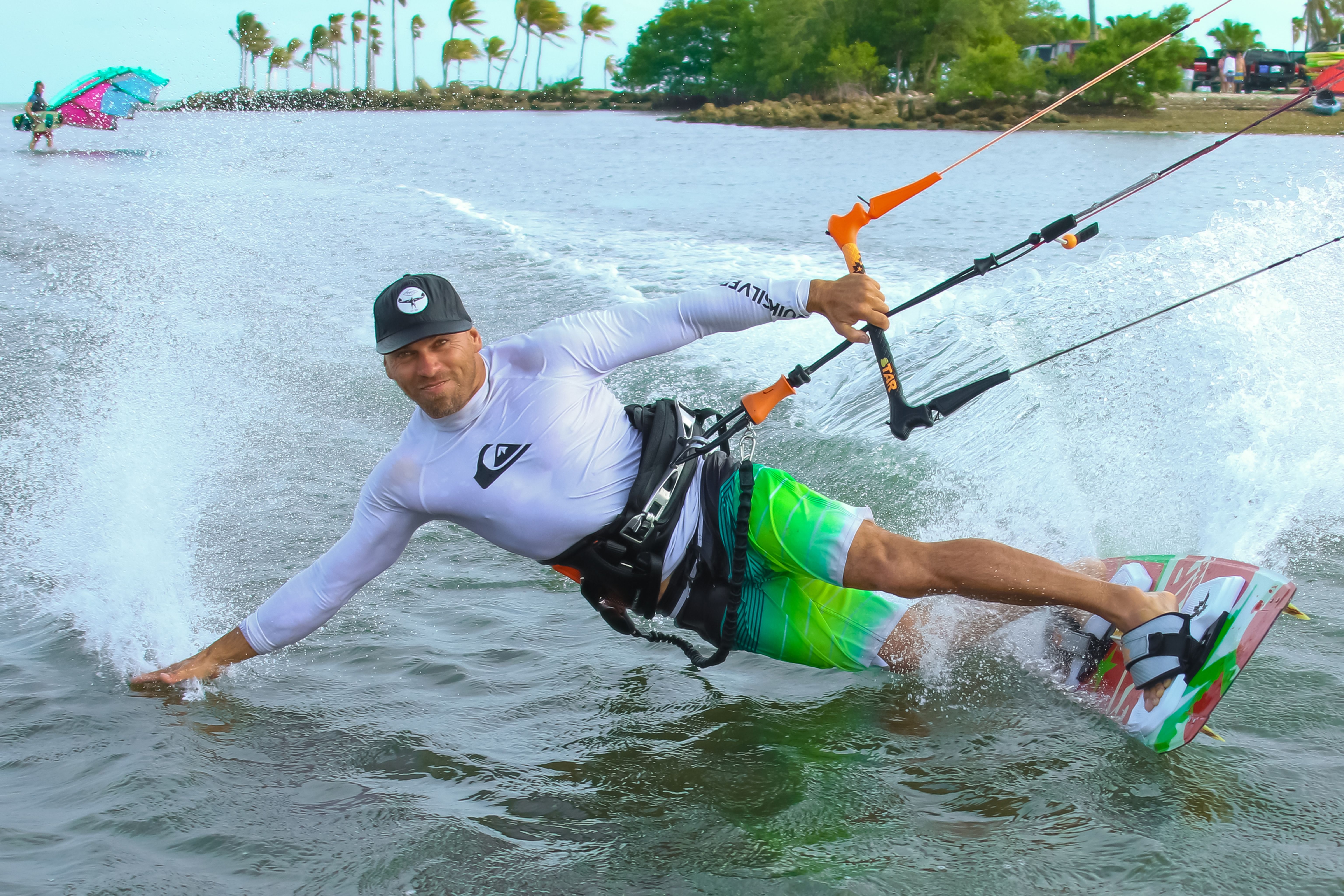
Just because you mostly see super fit men and women practicing the sport doesn't mean it's a requirement. Kiteboarding is a kids-of-all-ages sport, and people of all fitness levels can do it!
Of course, the fitter you are, the easier it will be to learn and progress in the sport, but don't let that discourage you from giving it a try.
Kiteboarding is a physically demanding sport, so being in good shape will help you immensely.
It's also important to be comfortable in the water. If you're not a good swimmer, then you should definitely practice before jumping into the deep end!
Conclusion
Ready to give kiteboarding a go? It's an excellent sport for those who want to experience the thrill of flying and the excitement of riding waves.
The kiteboarding community is full of friendly people who are always happy to help out newcomers.
It can be a bit challenging to learn at first, but it will become second nature with some practice.
Just be patient and have fun with it!

